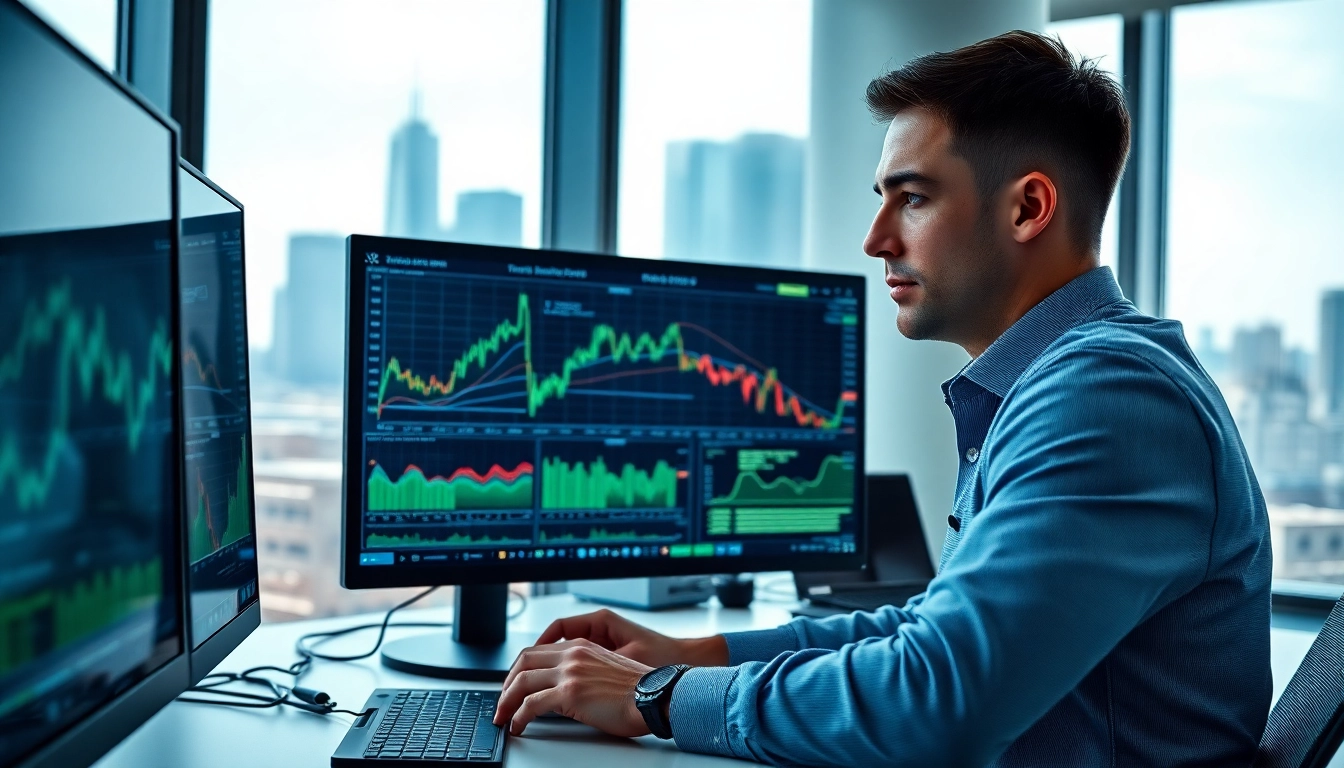Understanding Trade Futures
Trade futures play a significant role in global markets, helping traders speculate on future price movements of a variety of assets. For many individuals and businesses, these contracts serve as a vital instrument for both investment and risk management. By participating in trade futures, traders can lock in prices today for delivery at a future date, thus gaining exposure to fluctuations in asset prices while also leveraging capital in innovative ways.
What Are Trade Futures?
Trade futures are standardized contracts traded on exchanges that obligate the buyer to purchase, and the seller to sell, an asset at a predetermined price on a specified future date. These contracts cover various types of assets, including commodities like oil and gold, financial instruments like treasury bonds and stock indices, and Forex products. Unlike options, which provide the buyer the right but not the obligation to purchase an asset, futures contracts are binding agreements, meaning both parties must fulfill the terms of the contract when it expires.
How Trade Futures Work
Futures contracts work through a process involving various market participants, including hedgers, speculators, and arbitrageurs. Hedgers use futures contracts to stabilize cash flow by locking in prices, thereby minimizing their exposure to price fluctuations. For instance, a farmer might sell futures to guarantee the price of his crops before harvest. In contrast, speculators attempt to profit from price movements without any actual interest in the underlying asset. They buy low and sell high or sell high and buy low to gain from market fluctuations. Arbitrageurs exploit price discrepancies between markets to ensure prices align efficiently.
Benefits of Engaging in Trade Futures
Engaging in trade futures offers numerous benefits:
- Leverage: Futures require a small initial deposit relative to the contract’s total value, allowing for greater exposure to larger positions.
- Liquidity: The futures market is typically highly liquid, allowing quick entry and exit without significantly impacting prices.
- Hedging Opportunities: Businesses can hedge against price movements, making futures an effective tool for risk management.
- Diversification: Traders can diversify their portfolios by gaining exposure to various asset classes.
Key Terminologies in Trade Futures
Essential Terms Every Trader Should Know
Futures trading involves several critical terms that every trader should be familiar with:
- Margin: The deposit required to open a leveraged position in futures trading.
- Contract Size: The standardized quantity of the underlying asset specified in a futures contract.
- Expiration Date: The date on which the futures contract expires, requiring the delivery of the underlying asset.
- Open Interest: The total number of outstanding contracts that have not been settled for a particular future.
- Settlement: The process of resolving a futures contract either through physical delivery of the asset or cash settlement.
Understanding Futures Contracts
A futures contract details the quantity, quality, and delivery terms of the underlying asset, making it crucial for traders to understand the specifications of the contract they are entering. Each futures contract represents a standardized amount of the asset, critical for consistency throughout trading processes. These specifications and contract details help ensure transparency and trust in the market.
Market Indicators Affecting Trade Futures
Several market indicators can influence the price of futures contracts, including:
- Supply and Demand: Changes in supply and demand dynamics directly affect price movements.
- Economic Data: Indicators such as GDP growth, unemployment rates, and consumer sentiment can impact futures prices.
- Geopolitical Events: Conflicts or political changes can create volatility in commodity prices.
- Currency Fluctuations: Changes in currency value can influence prices, especially in commodities traded globally.
Developing a Trade Futures Strategy
Choosing the Right Futures to Trade
Choosing the right futures contracts to trade involves thorough research and analysis. Traders often consider factors such as:
- Market Volatility: Look for markets with enough volatility to provide opportunities for profit.
- Trading Volume: Focus on contracts with high trading volumes for better liquidity.
- Sector Knowledge: Trade in sectors you are knowledgeable about to anticipate market shifts accurately.
Risk Management Techniques
Implementing robust risk management strategies is essential for success in trade futures. Effective techniques include:
- Stop-Loss Orders: Set automatic sell orders at predetermined price levels to limit losses.
- Position Sizing: Determine the appropriate amount of capital to risk on each trade based on total account balance and risk tolerance.
- Risk-to-Reward Ratio: Evaluate the potential profit against the risk taken on each trade to ensure it aligns with your overall trading strategy.
Short-term vs. Long-term Trading Approaches
Understanding the difference between short-term and long-term trading approaches is critical for developing a successful futures trading strategy. Short-term trading often involves day trading or swing trading, aiming to capitalize on smaller price movements within a brief period. Conversely, long-term trading focuses on fundamental analysis and macroeconomic trends, positioning traders to benefit from larger price movements over time. Choosing the right approach depends on individual trading styles, market conditions, and risk tolerance.
Analyzing Market Trends for Trade Futures
Using Technical Analysis Tools
Technical analysis involves using historical price data and patterns to forecast future price movements in futures markets. Various tools and indicators, such as:
- Moving Averages: Help to identify trends and potential reversal points.
- Relative Strength Index (RSI): Indicates whether an asset is overbought or oversold.
- Bollinger Bands: Measure market volatility and identify potential price breakouts.
By utilizing these technical tools, traders can enhance their decision-making process and improve their trading outcomes.
Identifying Market Signals
Successful trading in futures requires keen observation of market signals, which may include price patterns, volume changes, and economic releases. Recognizing these signals can provide insights into future price movements, empowering traders to act proactively. Strategies may include:
- Using candlestick patterns to predict market sentiment.
- Monitoring news feeds for economic announcements that could affect futures prices.
- Utilizing sentiment indicators to gauge market psychology.
Fundamental Analysis Overview
Fundamental analysis focuses on understanding the economic and financial factors that influence the supply and demand of the underlying assets traded in futures markets. Key aspects of fundamental analysis include:
- Economic Indicators: Analyze GDP, employment rates, and inflation statistics, which can influence investment and spending behavior.
- Industry Reports: Examine reports and forecasts that provide insights into market conditions and trends related to specific commodities.
- Global Events: Keep abreast of geopolitical and environmental issues that could impact commodity prices significantly.
Measuring Performance in Trade Futures
Setting Profit Targets and Limits
Establishing clear profit targets and limit levels is essential in futures trading. By determining specific price points where trades will be closed, traders can effectively manage their risk and reward trade-offs. Techniques for setting these targets include:
- Utilizing Fibonacci retracement levels to identify potential reversal or target areas.
- Employing historical price resistance and support levels as markers for defining targets.
- Adjusting targets based on volatility measures to accommodate changing market conditions.
Key Performance Indicators for Traders
Monitoring key performance indicators (KPIs) is crucial for evaluating overall trading effectiveness. Common KPIs for futures traders encompass:
- Win Rate: The percentage of trades closed with a profit, providing insights into strategy effectiveness.
- Average Trade Profit: The average amount gained per successful trade compared to losses incurred.
- Risk-Reward Ratio: A measure comparing potential profits against potential losses, informing risk management strategies.
Evaluating Trading Success Over Time
Successful futures trading isn’t just about individual trades; it’s about consistent performance over time. Traders should regularly review their strategy by analyzing performance data, adjusting their approach based on lessons learned, and staying informed about changes in market conditions. This continuous evaluation process ensures that traders remain adaptive and improve their chances of success in the complex futures market.



